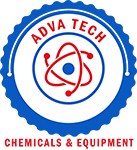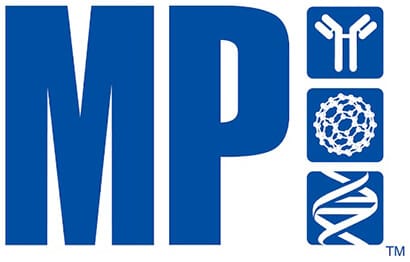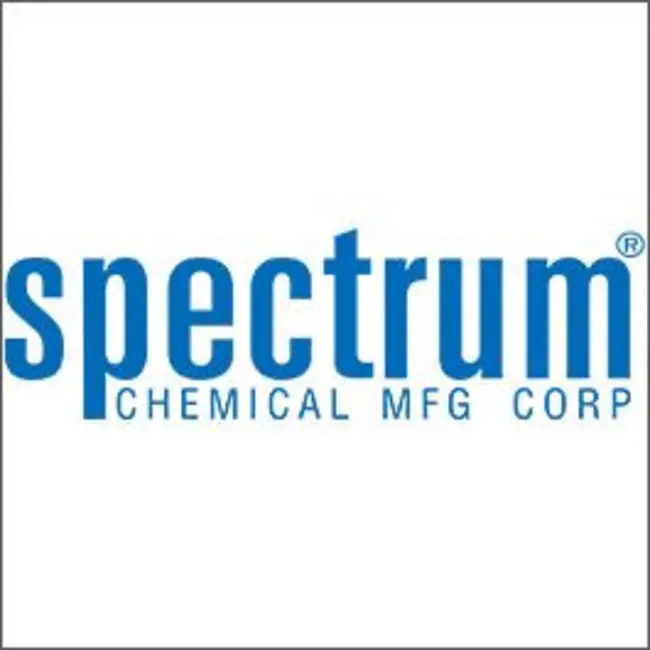GenScript Biotech
Showing 1851–1900 of 2554 results
-
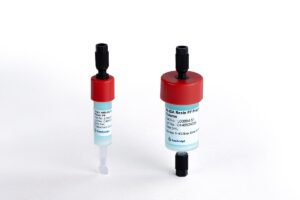
Ni-IDA Resin FF Prepacked Column
$40.54 Add to cart View Product DetailsGenScript Ni-IDA Resin FF is a 6% highly cross-linked agarose medium covalently coupled to a chelating agent that binds Ni2+ by three coordination sites for high-affinity purification of polyhistidine-tagged recombinant proteins. Ni-IDA Resin FF has low Ni2+ leakage, high protein-binding capacity and stability, and is compatible with a wide range of additives used in protein purification. Ni-IDA Resin FF Prepacked Column is an excellent choice for high performance purification of polyhistidine-tagged proteins.
Cat. No. Product Name Volume supplied Resin content L00684-12 Ni-IDA Resin FF prepacked column (1mlx2) 1mlx2 prepacked column L00684-51 Ni-IDA Resin FF prepacked column (5mlx1) 5mlx1 L00684-55 Ni-IDA Resin FF prepacked column (5mlx5) 5mlx5 Characteristics
Binding capacity >40 mg of histidine-tagged protein /ml settled resin Matrix spherical 6% highly cross-linked agarose Average particle size 90 μm (45-165 μm) Storage solution 20% ethanol Storage and Stability 18 months when stored unopened at 2-8 °C Column compatibility
The 5 mL and 1 mL columns are compatible with ÄKTA™ chromatography systems. Additional adaptors may be needed for other systems. The optimal flow rate is 1 mL/min for the 1 mL column, and 5 mL/min for the 5 mL column. For preserving the column integrity, please do not exceed a flow rate of 4 mL/min for the 1 mL column and 15 mL/min for the 5 mL column (The mobile phase of the test is aqueous buffers at room temperature and the alarm pressure is 0.3 MPa). -

Ni-IDA Resin FF Prepacked Column
$84.53 Add to cart View Product DetailsGenScript Ni-IDA Resin FF is a 6% highly cross-linked agarose medium covalently coupled to a chelating agent that binds Ni2+ by three coordination sites for high-affinity purification of polyhistidine-tagged recombinant proteins. Ni-IDA Resin FF has low Ni2+ leakage, high protein-binding capacity and stability, and is compatible with a wide range of additives used in protein purification. Ni-IDA Resin FF Prepacked Column is an excellent choice for high performance purification of polyhistidine-tagged proteins.
Cat. No. Product Name Volume supplied Resin content L00684-12 Ni-IDA Resin FF prepacked column (1mlx2) 1mlx2 prepacked column L00684-51 Ni-IDA Resin FF prepacked column (5mlx1) 5mlx1 L00684-55 Ni-IDA Resin FF prepacked column (5mlx5) 5mlx5 Characteristics
Binding capacity >40 mg of histidine-tagged protein /ml settled resin Matrix spherical 6% highly cross-linked agarose Average particle size 90 μm (45-165 μm) Storage solution 20% ethanol Storage and Stability 18 months when stored unopened at 2-8 °C Column compatibility
The 5 mL and 1 mL columns are compatible with ÄKTA™ chromatography systems. Additional adaptors may be needed for other systems. The optimal flow rate is 1 mL/min for the 1 mL column, and 5 mL/min for the 5 mL column. For preserving the column integrity, please do not exceed a flow rate of 4 mL/min for the 1 mL column and 15 mL/min for the 5 mL column (The mobile phase of the test is aqueous buffers at room temperature and the alarm pressure is 0.3 MPa). -

Ni-IDA Resin FF Prepacked Column
$377.78 Add to cart View Product DetailsGenScript Ni-IDA Resin FF is a 6% highly cross-linked agarose medium covalently coupled to a chelating agent that binds Ni2+ by three coordination sites for high-affinity purification of polyhistidine-tagged recombinant proteins. Ni-IDA Resin FF has low Ni2+ leakage, high protein-binding capacity and stability, and is compatible with a wide range of additives used in protein purification. Ni-IDA Resin FF Prepacked Column is an excellent choice for high performance purification of polyhistidine-tagged proteins.
Cat. No. Product Name Volume supplied Resin content L00684-12 Ni-IDA Resin FF prepacked column (1mlx2) 1mlx2 prepacked column L00684-51 Ni-IDA Resin FF prepacked column (5mlx1) 5mlx1 L00684-55 Ni-IDA Resin FF prepacked column (5mlx5) 5mlx5 Characteristics
Binding capacity >40 mg of histidine-tagged protein /ml settled resin Matrix spherical 6% highly cross-linked agarose Average particle size 90 μm (45-165 μm) Storage solution 20% ethanol Storage and Stability 18 months when stored unopened at 2-8 °C Column compatibility
The 5 mL and 1 mL columns are compatible with ÄKTA™ chromatography systems. Additional adaptors may be needed for other systems. The optimal flow rate is 1 mL/min for the 1 mL column, and 5 mL/min for the 5 mL column. For preserving the column integrity, please do not exceed a flow rate of 4 mL/min for the 1 mL column and 15 mL/min for the 5 mL column (The mobile phase of the test is aqueous buffers at room temperature and the alarm pressure is 0.3 MPa). -

Noggin Fc Chimera, Human
$1,177.31 Add to cart View Product DetailsNoggin, also known as NOG, is a homodimeric glycoprotein that bindsto and modulates the activity of TGF-beta family ligands. It is expressed in condensing cartilage and immature chondrocytes. Noggin antagonizes bone morphogenetic protein (BMP) activities by blocking epitopes on BMPs needed for binding to their receptors. Noggin has been shown to be involved in many developmental processes, such as neural tube formation and joint formation. During development, Noggin diffuses through extracellular matrices and forms morphogenic gradients, regulating cellular responses dependent on the local concentration of the signaling molecule.
-

Noggin Fc Chimera, Human
$90.56 Add to cart View Product DetailsNoggin, also known as NOG, is a homodimeric glycoprotein that bindsto and modulates the activity of TGF-beta family ligands. It is expressed in condensing cartilage and immature chondrocytes. Noggin antagonizes bone morphogenetic protein (BMP) activities by blocking epitopes on BMPs needed for binding to their receptors. Noggin has been shown to be involved in many developmental processes, such as neural tube formation and joint formation. During development, Noggin diffuses through extracellular matrices and forms morphogenic gradients, regulating cellular responses dependent on the local concentration of the signaling molecule.
-
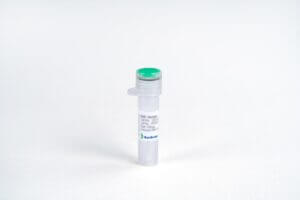
Noggin, Human(CHO-expressed)
$68.14 Add to cart View Product DetailsNoggin, also known as NOG, is a homodimeric glycoprotein that bindsto and modulates the activity of TGF-beta family ligands. It is expressed in condensing cartilage and immature chondrocytes. Noggin antagonizes bone morphogenetic protein (BMP) activities by blocking epitopes on BMPs needed for binding to their receptors. Noggin has been shown to be involved in many developmental processes, such as neural tube formation and joint formation. During development, Noggin diffuses through extracellular matrices and forms morphogenic gradients, regulating cellular responses dependent on the local concentration of the signaling molecule.
-

Noggin, Human(CHO-expressed)
$193.20 Add to cart View Product DetailsNoggin, also known as NOG, is a homodimeric glycoprotein that bindsto and modulates the activity of TGF-beta family ligands. It is expressed in condensing cartilage and immature chondrocytes. Noggin antagonizes bone morphogenetic protein (BMP) activities by blocking epitopes on BMPs needed for binding to their receptors. Noggin has been shown to be involved in many developmental processes, such as neural tube formation and joint formation. During development, Noggin diffuses through extracellular matrices and forms morphogenic gradients, regulating cellular responses dependent on the local concentration of the signaling molecule.
-

Noggin, Mouse(CHO-expressed)
$94.88 Add to cart View Product DetailsNoggin, also known as NOG, is a homodimeric glycoprotein that bindsto and modulates the activity of TGF-beta family ligands. It is expressed in condensing cartilage and immature chondrocytes. Noggin antagonizes bone morphogenetic protein (BMP) activities by blocking epitopes on BMPs needed for binding to their receptors. Noggin has been shown to be involved in many developmental processes, such as neural tube formation and joint formation. During development, Noggin diffuses through extracellular matrices and forms morphogenic gradients, regulating cellular responses dependent on the local concentration of the signaling molecule.
-

Noggin, Mouse(CHO-expressed)
$43.13 Add to cart View Product DetailsNoggin, also known as NOG, is a homodimeric glycoprotein that bindsto and modulates the activity of TGF-beta family ligands. It is expressed in condensing cartilage and immature chondrocytes. Noggin antagonizes bone morphogenetic protein (BMP) activities by blocking epitopes on BMPs needed for binding to their receptors. Noggin has been shown to be involved in many developmental processes, such as neural tube formation and joint formation. During development, Noggin diffuses through extracellular matrices and forms morphogenic gradients, regulating cellular responses dependent on the local concentration of the signaling molecule.
-

NRG-1β2, Human
$155.25 Add to cart View Product DetailsNeuregulin is a signaling protein for ErbB2/ErbB4 receptor heterodimers on the cardiac muscle cells, playing an important role in heart structure and function through inducing ErbB2/ErbB4 receptor phosphorylation and cardiomyocyte differentiation. Research on molecular level discovered that recombinant neuregulin could make disturbed myocardial cell structure into order and strengthen the connection between myocardial cells by intercalated discs re-organization.
-
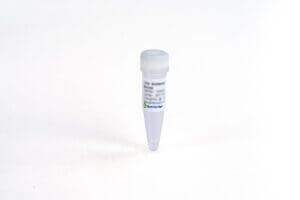
NSE (19A1), mAb, Mouse
$204.41 Add to cart View Product DetailsNeuron-Specific
Enolase (NSE) is recognized as a biomarker for small cell lung cancer. It is
secreted from neuroendocrine cells as well as neurogenic tumors. Its levels in
NSE-secreting neoplasms correlate with tumor mass and tumor metabolic activity. -

NSE (19A1), mAb, Mouse
$2,044.13 Add to cart View Product DetailsNeuron-Specific
Enolase (NSE) is recognized as a biomarker for small cell lung cancer. It is
secreted from neuroendocrine cells as well as neurogenic tumors. Its levels in
NSE-secreting neoplasms correlate with tumor mass and tumor metabolic activity. -
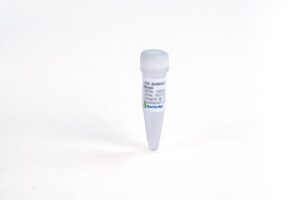
NSE (19A1), mAb, Mouse
$20,441.25 Add to cart View Product DetailsNeuron-Specific
Enolase (NSE) is recognized as a biomarker for small cell lung cancer. It is
secreted from neuroendocrine cells as well as neurogenic tumors. Its levels in
NSE-secreting neoplasms correlate with tumor mass and tumor metabolic activity. -

NSE (19E2), mAb, Mouse
$204.41 Add to cart View Product DetailsNeuron-Specific Enolase (NSE) is recognized as a biomarker for small cell lung cancer. It is secreted from neuroendocrine cells as well as neurogenic tumors. Its levels in NSE-secreting neoplasms correlate with tumor mass and tumor metabolic activity.
-

NSE (19E2), mAb, Mouse
$2,044.13 Add to cart View Product DetailsNeuron-Specific Enolase (NSE) is recognized as a biomarker for small cell lung cancer. It is secreted from neuroendocrine cells as well as neurogenic tumors. Its levels in NSE-secreting neoplasms correlate with tumor mass and tumor metabolic activity.
-

NSE (19E2), mAb, Mouse
$20,441.25 Add to cart View Product DetailsNeuron-Specific Enolase (NSE) is recognized as a biomarker for small cell lung cancer. It is secreted from neuroendocrine cells as well as neurogenic tumors. Its levels in NSE-secreting neoplasms correlate with tumor mass and tumor metabolic activity.
-
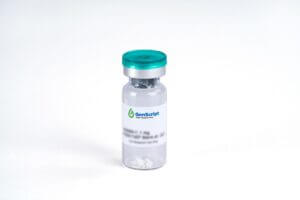
NT-4, Mouse
$2,018.25 Add to cart View Product DetailsNeurotrophin-4 (NT-4), also known as NT-5, is a neurotrophic factor structurally related to β-NGF, BDNF, and NT-3. Human NT-4 shares 48 – 52% aa sequence identity with human β-NGF, BDNF, and NT-3. Neurotrophins have six conserved cysteine residues that are involved in the formation of three disulfide bonds. NT-4 is expressed highest levels in prostate, lower levels in thymus, placenta, and skeletal muscle. NT-4 binds and induces receptor dimerization and activation of TrkB. NT-4 can signal through TrkB receptors and promotes the survival of peripheral sensory sympathetic neurons.
-

NT-4, Mouse
$86.25 Add to cart View Product DetailsNeurotrophin-4 (NT-4), also known as NT-5, is a neurotrophic factor structurally related to β-NGF, BDNF, and NT-3. Human NT-4 shares 48 – 52% aa sequence identity with human β-NGF, BDNF, and NT-3. Neurotrophins have six conserved cysteine residues that are involved in the formation of three disulfide bonds. NT-4 is expressed highest levels in prostate, lower levels in thymus, placenta, and skeletal muscle. NT-4 binds and induces receptor dimerization and activation of TrkB. NT-4 can signal through TrkB receptors and promotes the survival of peripheral sensory sympathetic neurons.
-

NT-4, Mouse
$271.69 Add to cart View Product DetailsNeurotrophin-4 (NT-4), also known as NT-5, is a neurotrophic factor structurally related to β-NGF, BDNF, and NT-3. Human NT-4 shares 48 – 52% aa sequence identity with human β-NGF, BDNF, and NT-3. Neurotrophins have six conserved cysteine residues that are involved in the formation of three disulfide bonds. NT-4 is expressed highest levels in prostate, lower levels in thymus, placenta, and skeletal muscle. NT-4 binds and induces receptor dimerization and activation of TrkB. NT-4 can signal through TrkB receptors and promotes the survival of peripheral sensory sympathetic neurons.
-

NT-proBNP (3B42HC)
$196.65 Add to cart View Product DetailsBNP and NT-proBNP are separated from precursor molecule proBNP via proteolytic processing. The BNP and NT-proBNP level in blood are proportional to the severity of cardiac dysfunction. They can be used for diagnosis of congestive heart failure (CHF).
-

NT-proBNP (3B42HC)
$1,966.50 Add to cart View Product DetailsBNP and NT-proBNP are separated from precursor molecule proBNP via proteolytic processing. The BNP and NT-proBNP level in blood are proportional to the severity of cardiac dysfunction. They can be used for diagnosis of congestive heart failure (CHF).
-

NT-proBNP (3B42HC)
$16,732.50 Add to cart View Product DetailsBNP and NT-proBNP are separated from precursor molecule proBNP via proteolytic processing. The BNP and NT-proBNP level in blood are proportional to the severity of cardiac dysfunction. They can be used for diagnosis of congestive heart failure (CHF).
-
![NWSHPQFEK Antibody [HRP], pAb, Rabbit](https://advatechgroup.com/wp-content/uploads/2025/06/antibody01-300x200.jpg.pagespeed.ce.lJjhncTAx7.jpg)
NWSHPQFEK Antibody [HRP], pAb, Rabbit
$87.98 Add to cart View Product DetailsThis Antibody recognizes Strep-tag II tagged fusion proteins.
-
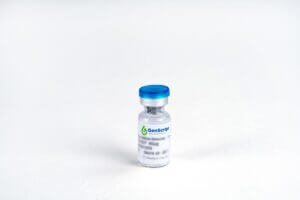
NWSHPQFEK Antibody, pAb, Rabbit
$87.98 Add to cart View Product DetailsThis antibody recognizes NWSHPQFEK tagged fusion protein.
-

OSM (209aa), Human
$2,018.25 Add to cart View Product DetailsOncostatin M (OSM) is a multifunctional cytokine, and belongs to Interleukin-6 (IL-6) subfamily, which also includes IL-11, leukemia inhibitory factor (LIF), ciliary neurotropic factor, cardiotrophin-1, and novel neurotropin-1. In vivo, OSM is secreted from activated T cells, monocytes, neutrophils, and endothelial cells. OSM is related to LIF, and shares a receptor with LIF in human. Human OSM can bind to gp130 and recruit OSM Receptor β or LIF Receptor β to form a ternary complex. OSM stimulates the growth of different types of cells, including megakaryocytes, fibroblasts, vascular endothelial cells, and T cells. OSM inhibits the proliferation of several cancer cell lines, such as solid tissue tumor cells, lung cancer cells, melanoma cells, and breast cancer cells.
-

OSM (209aa), Human
$86.25 Add to cart View Product DetailsOncostatin M (OSM) is a multifunctional cytokine, and belongs to Interleukin-6 (IL-6) subfamily, which also includes IL-11, leukemia inhibitory factor (LIF), ciliary neurotropic factor, cardiotrophin-1, and novel neurotropin-1. In vivo, OSM is secreted from activated T cells, monocytes, neutrophils, and endothelial cells. OSM is related to LIF, and shares a receptor with LIF in human. Human OSM can bind to gp130 and recruit OSM Receptor β or LIF Receptor β to form a ternary complex. OSM stimulates the growth of different types of cells, including megakaryocytes, fibroblasts, vascular endothelial cells, and T cells. OSM inhibits the proliferation of several cancer cell lines, such as solid tissue tumor cells, lung cancer cells, melanoma cells, and breast cancer cells.
-

OSM (209aa), Human
$271.69 Add to cart View Product DetailsOncostatin M (OSM) is a multifunctional cytokine, and belongs to Interleukin-6 (IL-6) subfamily, which also includes IL-11, leukemia inhibitory factor (LIF), ciliary neurotropic factor, cardiotrophin-1, and novel neurotropin-1. In vivo, OSM is secreted from activated T cells, monocytes, neutrophils, and endothelial cells. OSM is related to LIF, and shares a receptor with LIF in human. Human OSM can bind to gp130 and recruit OSM Receptor β or LIF Receptor β to form a ternary complex. OSM stimulates the growth of different types of cells, including megakaryocytes, fibroblasts, vascular endothelial cells, and T cells. OSM inhibits the proliferation of several cancer cell lines, such as solid tissue tumor cells, lung cancer cells, melanoma cells, and breast cancer cells.
-

OSM (227aa), Human
$2,018.25 Add to cart View Product DetailsOncostatin M (OSM) is a multifunctional cytokine, and belongs to Interleukin-6 (IL-6) subfamily, including IL-11, leukemia inhibitory factor (LIF), ciliary neurotropic factor, cardiotrophin-1, and novel neurotropin-1. In vivo, OSM is secreted from activated T cells, monocytes, neutrophils, and endothelial cells. OSM is related to LIF, and share a receptor with LIF in human. Human OSM can bind to gp130 and recruit OSM Receptor β or LIF Receptor β to form a ternary complex. OSM stimulates the growth of different types of cells, including megakaryocytes, fibroblasts, vascular endothelial cells, and T cells. On the other hand, OSM inhibits the proliferation of several cancer cell lines, such as solid tissue tumor cells, lung cancer cells, melanoma cells, and breast cancer cells.
-

OSM (227aa), Human
$86.25 Add to cart View Product DetailsOncostatin M (OSM) is a multifunctional cytokine, and belongs to Interleukin-6 (IL-6) subfamily, including IL-11, leukemia inhibitory factor (LIF), ciliary neurotropic factor, cardiotrophin-1, and novel neurotropin-1. In vivo, OSM is secreted from activated T cells, monocytes, neutrophils, and endothelial cells. OSM is related to LIF, and share a receptor with LIF in human. Human OSM can bind to gp130 and recruit OSM Receptor β or LIF Receptor β to form a ternary complex. OSM stimulates the growth of different types of cells, including megakaryocytes, fibroblasts, vascular endothelial cells, and T cells. On the other hand, OSM inhibits the proliferation of several cancer cell lines, such as solid tissue tumor cells, lung cancer cells, melanoma cells, and breast cancer cells.
-

OSM (227aa), Human
$271.69 Add to cart View Product DetailsOncostatin M (OSM) is a multifunctional cytokine, and belongs to Interleukin-6 (IL-6) subfamily, including IL-11, leukemia inhibitory factor (LIF), ciliary neurotropic factor, cardiotrophin-1, and novel neurotropin-1. In vivo, OSM is secreted from activated T cells, monocytes, neutrophils, and endothelial cells. OSM is related to LIF, and share a receptor with LIF in human. Human OSM can bind to gp130 and recruit OSM Receptor β or LIF Receptor β to form a ternary complex. OSM stimulates the growth of different types of cells, including megakaryocytes, fibroblasts, vascular endothelial cells, and T cells. On the other hand, OSM inhibits the proliferation of several cancer cell lines, such as solid tissue tumor cells, lung cancer cells, melanoma cells, and breast cancer cells.
-

OSM, Mouse
$2,018.25 Add to cart View Product DetailsOncostatin M (OSM) is a multifunctional cytokine, and belongs to Interleukin-6 (IL-6) subfamily, which also includes IL-11, leukemia inhibitory factor (LIF), ciliary neurotropic factor, cardiotrophin-1, and novel neurotropin-1. In vivo, OSM is secreted from activated T cells, monocytes, neutrophils, and endothelial cells. OSM is related to LIF, and shares a receptor with LIF in human. Human OSM can bind to gp130 and recruit OSM Receptor β or LIF Receptor β to form a ternary complex. OSM stimulates the growth of different types of cells, including megakaryocytes, fibroblasts, vascular endothelial cells, and T cells. OSM inhibits the proliferation of several cancer cell lines, such as solid tissue tumor cells, lung cancer cells, melanoma cells, and breast cancer cells.
-

OSM, Mouse
$86.25 Add to cart View Product DetailsOncostatin M (OSM) is a multifunctional cytokine, and belongs to Interleukin-6 (IL-6) subfamily, which also includes IL-11, leukemia inhibitory factor (LIF), ciliary neurotropic factor, cardiotrophin-1, and novel neurotropin-1. In vivo, OSM is secreted from activated T cells, monocytes, neutrophils, and endothelial cells. OSM is related to LIF, and shares a receptor with LIF in human. Human OSM can bind to gp130 and recruit OSM Receptor β or LIF Receptor β to form a ternary complex. OSM stimulates the growth of different types of cells, including megakaryocytes, fibroblasts, vascular endothelial cells, and T cells. OSM inhibits the proliferation of several cancer cell lines, such as solid tissue tumor cells, lung cancer cells, melanoma cells, and breast cancer cells.
-

OSM, Mouse
$271.69 Add to cart View Product DetailsOncostatin M (OSM) is a multifunctional cytokine, and belongs to Interleukin-6 (IL-6) subfamily, which also includes IL-11, leukemia inhibitory factor (LIF), ciliary neurotropic factor, cardiotrophin-1, and novel neurotropin-1. In vivo, OSM is secreted from activated T cells, monocytes, neutrophils, and endothelial cells. OSM is related to LIF, and shares a receptor with LIF in human. Human OSM can bind to gp130 and recruit OSM Receptor β or LIF Receptor β to form a ternary complex. OSM stimulates the growth of different types of cells, including megakaryocytes, fibroblasts, vascular endothelial cells, and T cells. OSM inhibits the proliferation of several cancer cell lines, such as solid tissue tumor cells, lung cancer cells, melanoma cells, and breast cancer cells.
-

OSM, Mouse(HEK 293-expressed)
$2,018.25 Add to cart View Product DetailsOncostatin M (OSM) is a multifunctional cytokine, and belongs to Interleukin-6 (IL-6) subfamily, which also includes IL-11, leukemia inhibitory factor (LIF), ciliary neurotropic factor, cardiotrophin-1, and novel neurotropin-1. In vivo, OSM is secreted from activated T cells, monocytes, neutrophils, and endothelial cells. OSM is related to LIF, and shares a receptor with LIF in human. Human OSM can bind to gp130 and recruit OSM Receptor β or LIF Receptor β to form a ternary complex. OSM stimulates the growth of different types of cells, including megakaryocytes, fibroblasts, vascular endothelial cells, and T cells. OSM inhibits the proliferation of several cancer cell lines, such as solid tissue tumor cells, lung cancer cells, melanoma cells, and breast cancer cells.
-

OSM, Mouse(HEK 293-expressed)
$86.25 Add to cart View Product DetailsOncostatin M (OSM) is a multifunctional cytokine, and belongs to Interleukin-6 (IL-6) subfamily, which also includes IL-11, leukemia inhibitory factor (LIF), ciliary neurotropic factor, cardiotrophin-1, and novel neurotropin-1. In vivo, OSM is secreted from activated T cells, monocytes, neutrophils, and endothelial cells. OSM is related to LIF, and shares a receptor with LIF in human. Human OSM can bind to gp130 and recruit OSM Receptor β or LIF Receptor β to form a ternary complex. OSM stimulates the growth of different types of cells, including megakaryocytes, fibroblasts, vascular endothelial cells, and T cells. OSM inhibits the proliferation of several cancer cell lines, such as solid tissue tumor cells, lung cancer cells, melanoma cells, and breast cancer cells.
-

OSM, Mouse(HEK 293-expressed)
$271.69 Add to cart View Product DetailsOncostatin M (OSM) is a multifunctional cytokine, and belongs to Interleukin-6 (IL-6) subfamily, which also includes IL-11, leukemia inhibitory factor (LIF), ciliary neurotropic factor, cardiotrophin-1, and novel neurotropin-1. In vivo, OSM is secreted from activated T cells, monocytes, neutrophils, and endothelial cells. OSM is related to LIF, and shares a receptor with LIF in human. Human OSM can bind to gp130 and recruit OSM Receptor β or LIF Receptor β to form a ternary complex. OSM stimulates the growth of different types of cells, including megakaryocytes, fibroblasts, vascular endothelial cells, and T cells. OSM inhibits the proliferation of several cancer cell lines, such as solid tissue tumor cells, lung cancer cells, melanoma cells, and breast cancer cells.
-
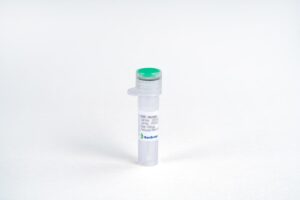
OX40 Fc Chimera, Mouse
$1,035.00 Add to cart View Product DetailsOX40 (TNFRSF4, CD134) is a member of the tumor necrosis factor (TNF) receptor superfamily that regulates T cell activity and immune responses. The OX40 protein contains four cysteine rich domains, a transmembrane domain, and a cytoplasmic tail containing a QEE motif. OX40 is primarily expressed on activated CD4+ and CD8+ T-cells, while the OX40 ligand (OX40L, TNFSF4, CD252) is predominantly expressed on activated antigen presenting cells. The engagement of OX40 with OX40L leads to the recruitment of TNF receptor-associated factors (TRAFs) and results in the formation of a TCR-independent signaling complex. One component of this complex, PKCθ, activates the NF-κB pathway. OX40 signaling through Akt can also enhance TCR signaling directly. Research studies indicate that the OX40L-OX40 pathway is associated with inflammation and autoimmune diseases. Additional research studies show that OX40 agonists augment anti-tumor immunity in several cancer types.
-

OX40 Fc Chimera, Mouse
$172.50 Add to cart View Product DetailsOX40 (TNFRSF4, CD134) is a member of the tumor necrosis factor (TNF) receptor superfamily that regulates T cell activity and immune responses. The OX40 protein contains four cysteine rich domains, a transmembrane domain, and a cytoplasmic tail containing a QEE motif. OX40 is primarily expressed on activated CD4+ and CD8+ T-cells, while the OX40 ligand (OX40L, TNFSF4, CD252) is predominantly expressed on activated antigen presenting cells. The engagement of OX40 with OX40L leads to the recruitment of TNF receptor-associated factors (TRAFs) and results in the formation of a TCR-independent signaling complex. One component of this complex, PKCθ, activates the NF-κB pathway. OX40 signaling through Akt can also enhance TCR signaling directly. Research studies indicate that the OX40L-OX40 pathway is associated with inflammation and autoimmune diseases. Additional research studies show that OX40 agonists augment anti-tumor immunity in several cancer types.
-

OX40/TNFRSF4, His, Human
$1,035.00 Add to cart View Product DetailsOX40 is a T cell co-stimulatory molecule of the TNF receptor superfamily that coordinates with other co-stimulators (CD28, CD40, CD30, CD27 and 4-1BB) to manage the activation of the immune response. Tumor necrosis factor ligand superfamily member 4 (TNFSF4) is also known as glycoprotein Gp34, OX40 ligand (OX40L), TAX transcriptionally-activated glycoprotein 1 and CD252, which belongs to the tumor necrosis factor family. TNFSF4 is the ligand for CD134 and is expressed on cells such as DC2s (a subtype of dendritic cells) enabling amplification of Th2 cell differentiation. OX40 is constitutively expressed on Tregs and enhances the sensitivity of Tregs to IL-2, thus promoting Treg proliferation. OX40 has also shown to decrease the cells’ immunosuppressive activity on effector T cells. OX40-OX40 Ligand signaling is involved in allergic airway inflammation, graft-versus-host disease and autoimmune disease.
-

OX40/TNFRSF4, His, Human
$215.63 Add to cart View Product DetailsOX40 is a T cell co-stimulatory molecule of the TNF receptor superfamily that coordinates with other co-stimulators (CD28, CD40, CD30, CD27 and 4-1BB) to manage the activation of the immune response. Tumor necrosis factor ligand superfamily member 4 (TNFSF4) is also known as glycoprotein Gp34, OX40 ligand (OX40L), TAX transcriptionally-activated glycoprotein 1 and CD252, which belongs to the tumor necrosis factor family. TNFSF4 is the ligand for CD134 and is expressed on cells such as DC2s (a subtype of dendritic cells) enabling amplification of Th2 cell differentiation. OX40 is constitutively expressed on Tregs and enhances the sensitivity of Tregs to IL-2, thus promoting Treg proliferation. OX40 has also shown to decrease the cells’ immunosuppressive activity on effector T cells. OX40-OX40 Ligand signaling is involved in allergic airway inflammation, graft-versus-host disease and autoimmune disease.
-
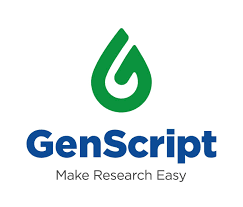
OX40L Trimer, His & Flag, Human
$301.88 Add to cart View Product DetailsTumor necrosis factor ligand superfamily member 4 (TNFSF4) is also known as glycoprotein Gp34, OX40 ligand (OX40L), which belongs to the tumor necrosis factor family. It is expressed on such cells as DC2s (a subtype of dendritic cells) enabling amplification of Th2 cell differentiation.
-

p-Tau181 Antibody(A2F), mAb, Mouse
$380.36 Add to cart View Product DetailsMicrotubule associated protein tau is a neuronal microtubule-associated protein found predominantly in brain. Abnormal phosphorylation of tau is involved in the pathogenesis of Alzheimer’s disease (AD). The tau protein phosphorylated at threonine 181 (p-tau181) is a promising diagnostic biomarker for AD.
-

p-Tau181 Antibody(A2F), mAb, Mouse
$3,803.63 Add to cart View Product DetailsMicrotubule associated protein tau is a neuronal microtubule-associated protein found predominantly in brain. Abnormal phosphorylation of tau is involved in the pathogenesis of Alzheimer’s disease (AD). The tau protein phosphorylated at threonine 181 (p-tau181) is a promising diagnostic biomarker for AD.
-

p-Tau181 Antibody(A2F), mAb, Mouse
$32,343.75 Add to cart View Product DetailsMicrotubule associated protein tau is a neuronal microtubule-associated protein found predominantly in brain. Abnormal phosphorylation of tau is involved in the pathogenesis of Alzheimer’s disease (AD). The tau protein phosphorylated at threonine 181 (p-tau181) is a promising diagnostic biomarker for AD.
-

PAGE-MASTER Protein Standard (for SDS-PAGE)
$41.40 Add to cart View Product DetailsPAGE-MASTER Protein Standard (for SDS-PAGE) is a protein standard specially designed by GenScript. It consists of seven bands with molecular weight of 10 kD, 20 kD, 30 kD, 40 kD, 60 kD, 80 kD and 120 kD. All bands are highly purified, thus exhibit excellent performance in SDS-PAGE gels.
This PAGE-MASTER protein standard is UNSTAINED. Stain the gel to visualize the protein ladders after electrophoresis.
-

PAGE-MASTER Protein Standard Plus
$51.75 Add to cart View Product DetailsPAGE-MASTER Protein Standard Plus is a special-designed protein standard by Genscript .The standard consists of nine proteins with molecular weight of 10kDa, 15KD, 20kDa, 30kDa, 40kDa, 50KDa 60kDa, 80kDa and 120kDa. The proteins of 15 KDa and 50KDa are pre-stained proteins coupled with blue dye for easy visualization. All the bands were highly purified, thus gives excellent performance in SDS-PAGE gels.
-

PAPP-A (19D1), mAb, Mouse
$116.44 Add to cart View Product DetailsPregnancy-associated plasma protein A (PAPP-A) is a high molecular weight protein. htPAPP-A is a protein complex which comprises of two PAPP-A subunits and two proform of eosinophil major basic protein. It exists in the blood of pregnant woman. dPAPP-A is a htPAPP-A dimmer which is composed of two PAPP-A subunits. htPAPP-A serves as a useful marker for the diagnosis of Down syndrome (DS).
-

PAPP-A (19D1), mAb, Mouse
$1,164.38 Add to cart View Product DetailsPregnancy-associated plasma protein A (PAPP-A) is a high molecular weight protein. htPAPP-A is a protein complex which comprises of two PAPP-A subunits and two proform of eosinophil major basic protein. It exists in the blood of pregnant woman. dPAPP-A is a htPAPP-A dimmer which is composed of two PAPP-A subunits. htPAPP-A serves as a useful marker for the diagnosis of Down syndrome (DS).
-

PAPP-A (19D1), mAb, Mouse
$9,832.50 Add to cart View Product DetailsPregnancy-associated plasma protein A (PAPP-A) is a high molecular weight protein. htPAPP-A is a protein complex which comprises of two PAPP-A subunits and two proform of eosinophil major basic protein. It exists in the blood of pregnant woman. dPAPP-A is a htPAPP-A dimmer which is composed of two PAPP-A subunits. htPAPP-A serves as a useful marker for the diagnosis of Down syndrome (DS).
-

PAPP-A (1AC2), mAb, Mouse
$116.44 Add to cart View Product DetailsPregnancy-associated plasma protein A (PAPP-A) is a high molecular weight protein. htPAPP-A is a protein complex which comprises of two PAPP-A subunits and two proform of eosinophil major basic protein. It exists in the blood of pregnant woman. dPAPP-A is a htPAPP-A dimmer which is composed of two PAPP-A subunits. htPAPP-A serves as a useful marker for the diagnosis of Down syndrome (DS).
